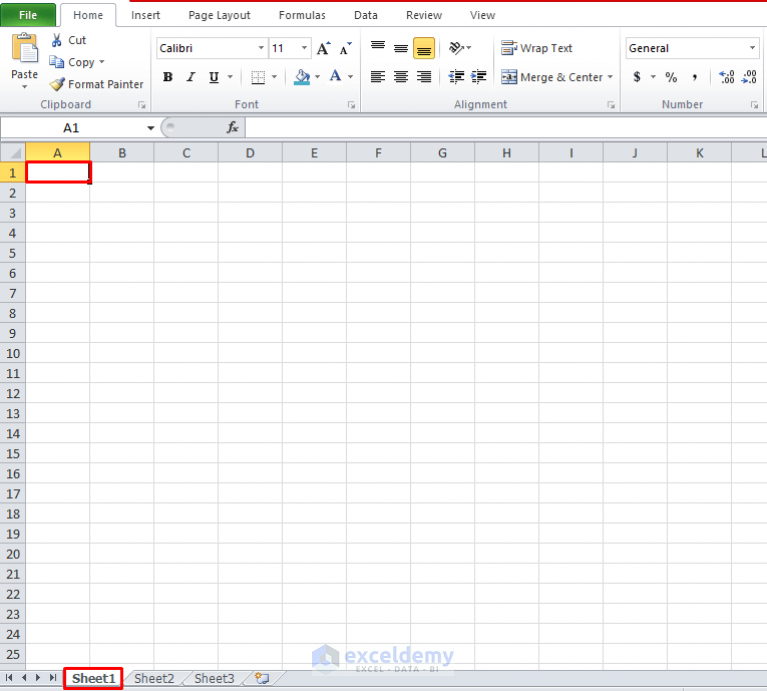5 Ways to Copy Excel Sheets Without Formulas

In the dynamic world of spreadsheet management, Excel users often find themselves needing to replicate their work while keeping certain aspects intact. While there are numerous methods to copy a sheet in Excel, this blog post dives deep into five key techniques that allow you to copy sheets without formulas, offering precision and control over what gets duplicated and what stays behind.
Method 1: Copy and Paste Values Only

This method is a straightforward technique for those looking to copy the raw data from one sheet to another without bringing along the formulas:
- Select the entire sheet by clicking on the triangle in the upper-left corner of the worksheet or press Ctrl+A.
- Right-click anywhere within the selected area, choose 'Copy' or press Ctrl+C.
- Navigate to the target sheet or create a new one.
- Right-click on cell A1 in the new sheet, go to 'Paste Options', and click on 'Paste Values' (or press Alt+E, S, V for a quicker method).
💡 Note: This method ensures that any charts, comments, and conditional formatting will not be copied over.
Method 2: Using Paste Special

‘Paste Special’ offers more flexibility, providing various paste options:
- Select the cells or the entire sheet you wish to copy.
- Right-click, select 'Copy' or press Ctrl+C.
- Go to the target sheet, click where you want to paste, then go to 'Home' tab, click 'Paste' and choose 'Paste Special' from the dropdown.
- In the 'Paste Special' dialog, choose 'Values' then click 'OK'. This will paste the data as static values, excluding formulas.
Method 3: Copy Sheet Using VBA

For those comfortable with VBA, here’s a script to replicate a sheet without formulas:
Sub CopySheetWithoutFormulas()
Dim sourceSheet As Worksheet, targetSheet As Worksheet
Dim lastRow As Long, lastCol As Long
Set sourceSheet = Sheets("Sheet1")
Set targetSheet = ThisWorkbook.Sheets.Add(After:=Sheets(Sheets.Count))
targetSheet.Name = "CopiedSheet"
With sourceSheet
lastRow = .Cells(.Rows.Count, "A").End(xlUp).Row
lastCol = .Cells(1, .Columns.Count).End(xlToLeft).Column
.Range(.Cells(1, 1), .Cells(lastRow, lastCol)).Copy
targetSheet.Range("A1").PasteSpecial Paste:=xlPasteValues
End With
End SubThis VBA script automates the process of copying a sheet with values only.
Method 4: Convert Formulas to Values Before Copying

If you wish to work on a single sheet without formulas:
- Copy the entire sheet by selecting all cells.
- Use 'Paste Special' to paste values back into the same sheet.
- Now, copy the sheet as usual (right-click on the sheet tab, choose 'Move or Copy', and check the 'Create a copy' option).
Method 5: Create a Template for Repeated Use

For frequent tasks, consider setting up a template:
- Set up a sheet with all your formatting, charts, and layouts but without formulas.
- Save this sheet as a template (File > Save As > Excel Template).
- Whenever you need a new sheet without formulas, just create a new workbook from this template.
Summing up, understanding and leveraging these methods will significantly enhance your productivity when working with Excel. Each technique provides a different approach to the same end goal: copying Excel sheets without their formulas. Whether you're manually adjusting data or automating tasks through VBA, these methods give you control over what data is shared, ensuring that your spreadsheets remain both accurate and uncluttered by unnecessary formulas.
Can I preserve formatting when copying sheets without formulas?

+
Yes, you can preserve formatting using ‘Paste Special’ and selecting ‘All except borders’ or ‘Values and number formats’ to copy over the formatting without formulas.
What happens to charts when I copy a sheet without formulas?

+
Charts will not be updated if they rely on formulas. However, charts can be manually updated or copied separately to the new sheet if needed.
Is there a way to automate the process of copying sheets without formulas?

+
Yes, through VBA scripting. You can write a script to automate the copying process, as shown in Method 3 of this post.



